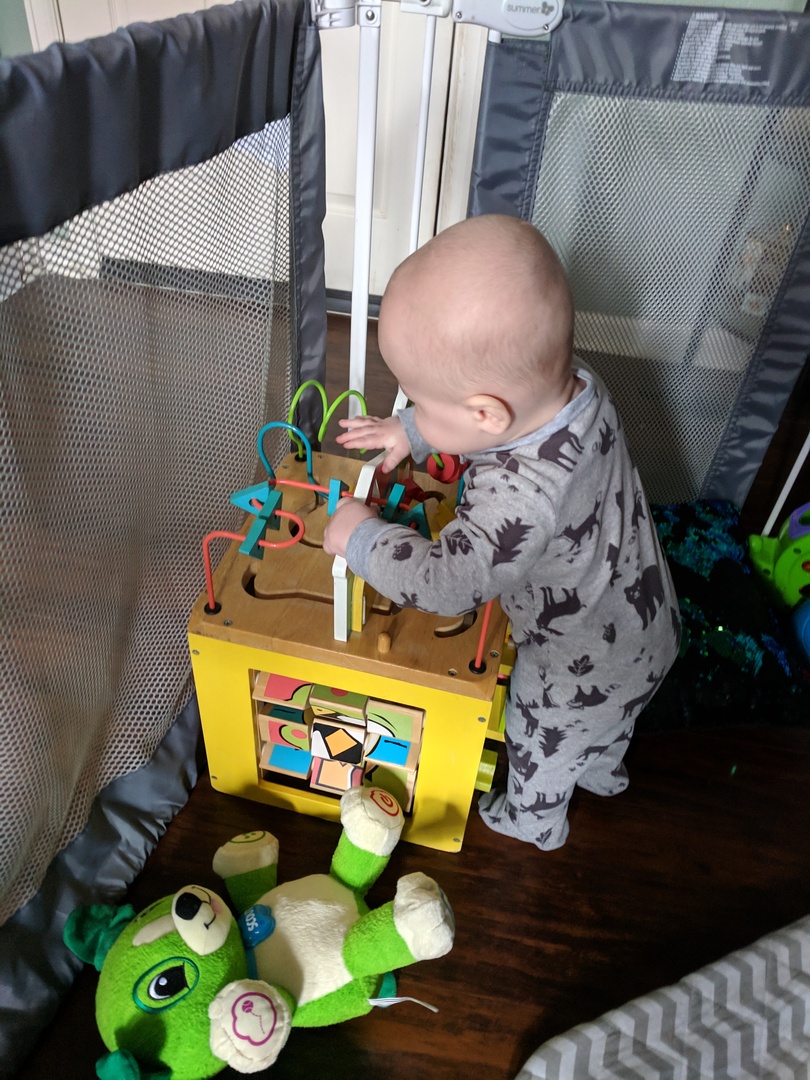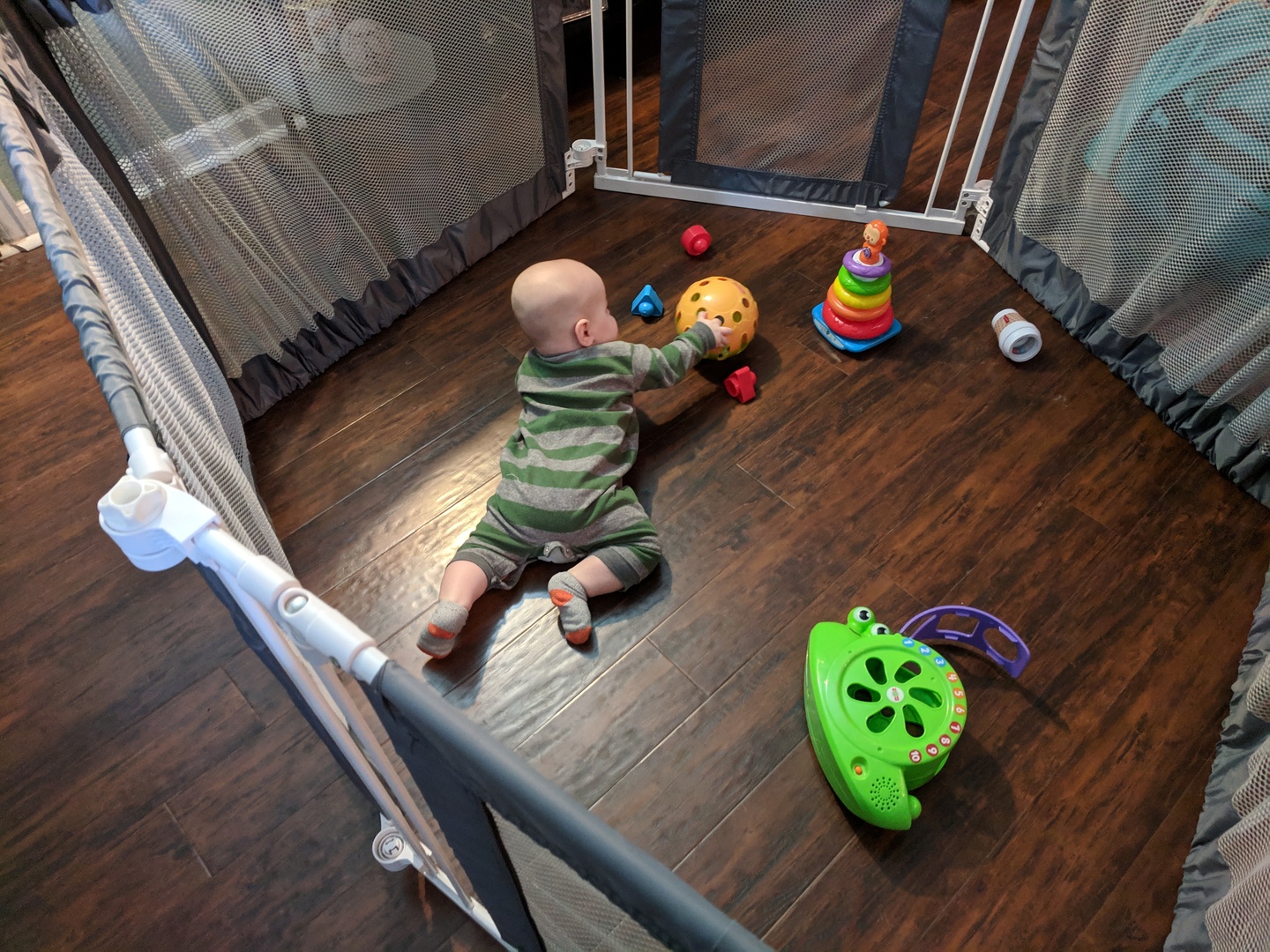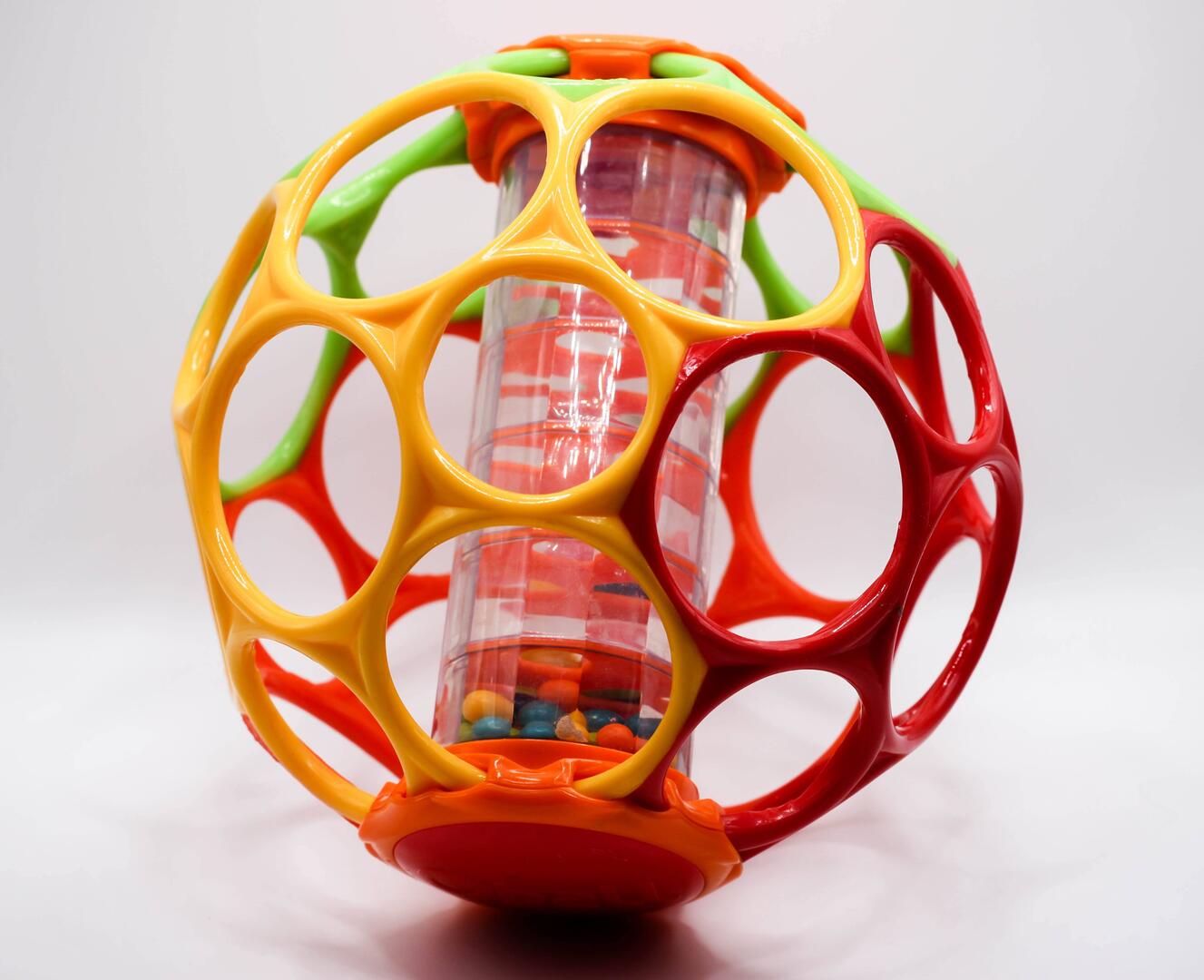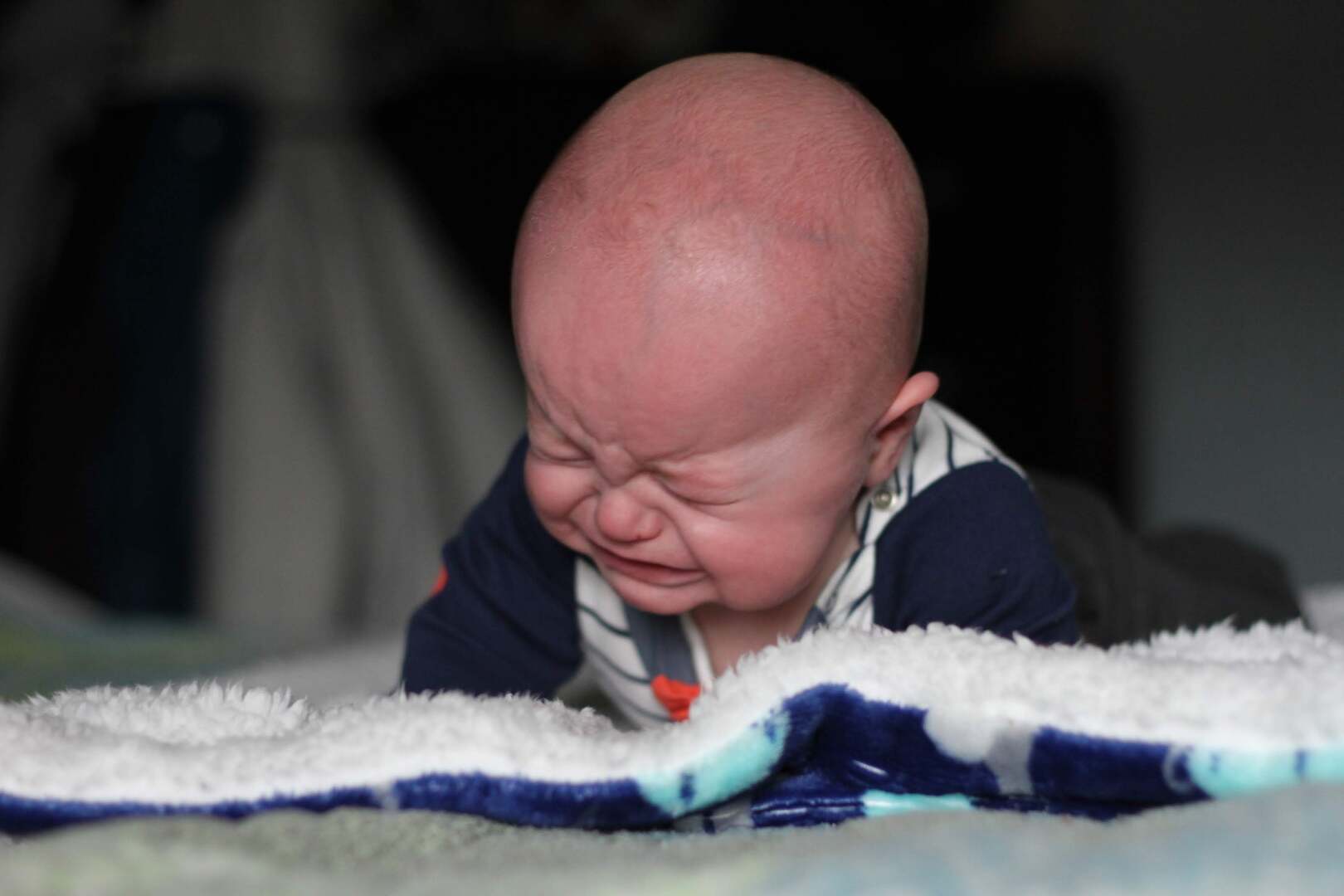By Markie February 16, 2023
…as soon as babies figure out that they can move and interact with things in their environment, they will love exploring infant-friendly toys!

Congratulations! You’ve had a baby. Now you will ask yourself, maybe for the first time, but definitely not the last, “What do I do with this kid?”
The first 3 months can be a bit of a blur or a slog or some sort of combo: a blurring slog or a slogging blur. Your baby is mostly in reflex mode for the first few weeks, but they still love to hear your voice and look at what’s going on around them.
Remember that the vision of very young babies is still developing, and for the first 4 months, babies see best within 12 inches of their face American Optometric Association. So snuggle your baby close and relish looking at those cherubic baby cheeks. At around 3 months old, babies can track items and start to reach for things. Basically, as soon as babies figure out that they can move and interact with things in their environment, they will love exploring infant-friendly toys!
Playing with toys is a great way for infants to develop their motor skills, cognitive abilities, and emotional intelligence. Choosing the right toys and playing interactively with your little one can even help them develop vision and language skills.
Warning: Make sure that all of the toys you give your infant are safe for them, and do not pose a strangulation or choking hazard. Safe toy tips are provided at the end of this post.
Here are some of our favorite toys for babies! And plenty of great ideas for how to play with them throughout the first year

-
Play instruments
Introduce musical instruments early. Babies are so fascinated by music! They can shake, bang, or tap instruments such as maracas, drums, or tambourines. You can also sing a song and shake an instrument to the beat.
Develops: listening skills, rhythm, cause-and-effect, fine motor skills
What to avoid: Toys that make electronic noises, flashing lights: anything that takes a battery. Let’s start with acoustic.
-
Ring stacker
This toy is a classic for a reason. How do the rings fit? Babies can shake and mouth the rings as they first start to explore. Within a few months, they can practice stacking the rings or taking them off.
Develops: cognitive skills, fine motor skills
-
Shape sorter
Babies first understand the world in 3 dimensions. Two dimensional images like pictures and flashcards are not as easy for them to understand as the real thing (same goes for TV and tablets). Babies are able to explore real objects: turning them over, putting them in their mouths, dropping them. That’s how they learn about the world! A shape sorter is a great toy for babies: they can turn and rotate the shapes, noticing how it looks different from different angles. You can start by helping your baby explore the shapes. After a few months, try guiding their hands to place the shapes in the holes.
Develops: cognitive skills, vision, fine motor, gross motor
-
Bead maze/abacus
With a baby abacus, your newborn can now calculate your taxes or something. Bead mazes and abacuses have fascinated children for centuries, much to the frustration of old-timey accountants who are parents. These engaging cause-and-effect toys can help develop an infant’s hand-eye coordination and cognitive abilities. They can practice moving the beads along the maze, learning about how objects move. You’ll be amazed how your baby goes back to this toy again and again, flicking the beads back-and-forth. Seriously, it’s weird, but cool.
Develops: cognitive skills, cause-and-effect, fine motor skills
-
Blocks
Build me a castle, baby! Well… let’s start by just holding a block. Now, it goes in the mouth, some people call the mouth a baby’s third hand. Make sure you clean toys regularly, of course, but let your baby mouth their baby-safe toys. Baby is not only exploring the toy; they are developing some motor control of the mouth which is essential for eating and talking! Once your baby is a little older, they might even try stacking a couple blocks. They’ll definitely throw them, and that’s part of learning too.
Develops: fine and gross motor skills, problem-solving, cognitive skills
-
Ball
A ball is a classic toy that can provide endless fun for a baby and also for professional athletes. Grab one of those larger bouncy balls or a baby ball (see photos below). You can help your baby roll the ball around. As they start to sit up, you can roll the ball back-and-forth. This develops their ability to take turns which is crucial when learning to communicate. Play like this mimics the back-and-forth rhythm of conversation. As your baby gets bigger and more coordinated, they can practice throwing, catching and maybe even kicking the ball.
Develops: gross motor skills, hand-eye-coordination, cause-and-effect

-
Rattle
Shake, Rattle, and Roll. Rattles don’t seem as common these days, and I don’t know why. It’s a great little infant-safe toy that babies just love. Of course, babies start by reaching for and holding the toy. Then we know it goes in the… mouth. As babies hold the rattle, they think “What is making that sound?” Soon, they’ll figure out, “It’s me. I am making that sound when I do this with my arm.” This is a paraphrase. I can definitely talk to babies, and YOU should too, but I’m not always sure what they say exactly. Anyway, that is the start of understanding cause-and-effect, and it is also super motivating for babies to find out they can make sounds. Just wait til they find out that they can make sounds with their mouths.
Develops: fine motor skills, cause-and-effect, language skills
Not technically toys / Honorable mentions
-
Teething toys
Should I let my baby chew on their infant-safe, soft toys? Absolutely. Should I let my baby put whatever they want in their mouth, like my wallet, keys, or a power drill? Uhhh… no. Babies instinctively put everything in their mouths. It is how they learn. Provide your baby with plenty of soft, safe toys to chew on. You can try to stop your baby putting things in their mouth, but it won’t work. Make sure to keep anything baby shouldn’t put in their mouth out of reach. Teething toys are a great way for your babe to relieve teething discomfort and also explore safe toys. They can practice biting and chewing on soft, soothing teething toys.
Develops: gross and fine motor skills, self-soothing, body awareness
-
Mirrors (infant-safe)
Infants are naturally curious about their own reflection and playing with mirrors is a great way for them to discover that they have a face and body. Not only that, but they can move their face and body. You can place a large infant-safe mirror on the floor or hold a smaller mirror up for the infant to look at themselves. Make your funniest face, and see if your baby will make a face back!
Develops: social skills, emotional awareness, vision
-
Tummy time mat
Tummy time is so important for our little ones as it helps strengthen their neck, shoulder, core, and back muscles Safe to Sleep. These muscles are used for everything. I’m talking every gross motor skill from sitting up to reaching to rolling over, crawling, and walking. It all starts with holding that head up. Set your baby on the path to motor coordination by making sure that they spend time on their tummy every day. Start with 2-3 sessions of 5 minutes a day, then gradually lengthen the amount of tummy time in each session. Of course, you can just use any clean blanket to set your baby on. But a tummy time mat can provide a comfortable and safe surface to explore. Many tummy time mats have toys attached for baby to play with, some even have toys that hang for tummy and back play. Place toys around the mat to encourage your baby to reach and grab.
Develops: gross motor skills, independence
Got a fussy baby?

Don’t be too worried about a little fussing, but if your baby seems distressed, try letting your baby do tummy time on your belly or chest while you lay on the ground, couch, or bed.
How do I know if a toy is a choking hazard?
Look for the warning label that shows 0-3 with a slash through it. There’s also a rough sketch of a baby usually. For choking hazardsThe general guideline is if your child is under 3 years of age, don’t give them any toy that will fit through the tube of a toilet paper roll. (Fun fact: There is actually a special metal “toilet paper tube” looking thing that officially determines if a toy poses choking hazards). Toys that small, or with small parts that can break off, are choking hazards. Also, nothing with strings or straps that could get wrapped around their neck.
Now you know about some great toys for your baby and some ways to play with them in their first year. By providing your baby with safe, age-appropriate toys, you enable them to explore the world with their senses and develop their motor skills. And don’t forget to have fun!
Please contact us or leave a comment if you have questions about toys for babies!
